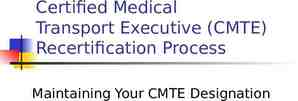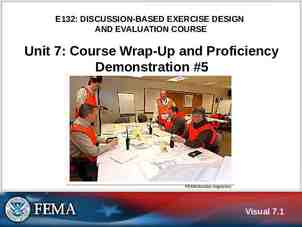MARK 362 with Duane Weaver BUILDING VALUABLE CUSTOMER
26 Slides313.50 KB

MARK 362 with Duane Weaver BUILDING VALUABLE CUSTOMER RELATIONSHIPS Creating, Maintaining and Providing Value

OUTLINE Creating Relationships – 20 lessons for sales success (overview) Maintaining the Relationship Providing Value

Creating Relationships The SALES SUCCESS Handbook – 20 Lessons to Pen and Close Sales Now, Linda Richardson, McGraw Hill, 2003 1 Create Dialogue – Build INTERACTIVITY – assess give/get ratio (talk/listen ratio) – Ask more PROBING questions (look for unique problems; look for the edge/leverage points) – LEARN about the CUSTOMER (avoid educating the customer)

Creating Relationships 2 Always be preparing Prepare all calls – Strategic Preparation – Customer Preparation – Product/Technical Preparation Tailor all material – Requires solid customer research to show you know your customer: logos, current trends/issues, environmental issues, personalized items. Visualize your call – Plan the flow and allow MORE time for customer input:. Type out a question flow chart or create bullet items to discuss (avoid written out questions other than your VITO opener). – Allow for flexibility to follow a customer’s sudden urgent need

Creating Relationships 3 Sharpen Critical Skills Presence, relating, questioning, listening, positioning, checking. Work on skills you need to improve. Commit to self-critique: assess your success Feedback: ask your customers how you are doing

Creating Relationships 4 Customer Focused Opening Build rapport Opener greets, establishes rapport and has agenda. (See selling to VITO)

Creating Relationships 5 Relate to customers Acknowledge – Verbally indicate you “heard” them Empathize – Genuine concern for observed emotions Rapport – How will you build rapport?

Creating Relationships 6 Position questioning – expectation management Bridge to asking questions and/or the right to take notes Enable the customer to understand the value to them of your questions (just tell me the price and features – avoid, ask needs firstwith permission)

Creating Relationships 7 Questioning Strategy High-impact needs dialogues – Understand obj’s, current situation, satisfaction levels, and future needs (especially personal) Prep questions Forward thinking: Understand all elements of implementation

Creating Relationships 8 Think questions Customer Needs FIRST Avoid answering (do not tell until you know all the needs take time to synthesize answers —shows concern and forethought about buyer needs)

Creating Relationships 9 Deeper NEED dialogues Slow down (avoid answering) Use acknowledgement vs. paraphrasing to encourage customer discussion CURIOUSITY drive (like you really do care)

Creating Relationships 10 Skillfully ask questions Open-ended Pace and Pause (one question at a time – do not answer your own questions – let the customer think) Drill-down questions – get deeper

Creating Relationships 11 Effective Listening Listen to ALL content (not just words) with INTENSITY and keep eye contact Listen for words/emotions and clarify ambiguity Listen with your eyes (body language) E.G.: ACTIVE LISTENING

Creating Relationships 12 Position Message Know and practice your key message Update your message continuously (keep it current) Position effectively (listen to key customer benefits and integrate them into your key message)

Creating Relationships 13 Analyze Competitors Know them (research) Get your customer’s view about them Tactful highlighting of their weaknesses (get the customer to consider the area of weakness without discussing the competitor or yourself)

Creating Relationships 14 Use objections to move forward Acknowledge or empathize with customer concern Ask questions to learn more about concern Position your response (customize response and check for satisfaction)

Creating Relationships 15 Check for FEEDBACK Ask for feedback before moving on Use checking questions throughout the call Reality check your objective (trial close, etc.)

Creating Relationships 16 Don’t negotiate TOO EARLY Understand the NEED beneath the DEMAND Trade don’t GIVE (Discount in return for what? More service support in exchange for what less?) Use the power of silence after stating price (the first to speak usually first to concede). (Be confident about the value you have built.)

Creating Relationships 17 Treat CLOSING as a PROCESS Objective for each call Feedback throughout call End call with ACTION STEP (sale or concrete next step – ask for ACTION)

Creating Relationships 18 Leverage all resources*** Map customer decision-making process, question, observe, analyze. (Access the decision makers and know who influences the decision maker.) Enlist support of your team members (share the credit when you win). Develop a coach within customer’s organization (champions your sale for you and guides you to success)

Creating Relationships 19 Follow up flawlessly Have a system (active daily to do) ORGANIZE Sense of urgency (be relentless and communicate deadlines with customers) Keep follow up in your court (don’t expect customers to do your job)

Creating Relationships 20 Validate the opportunity Assume nothing (double check all information received to make sure it is valid and real) Remember things change (revalidate and adjust your strategy and message) Don’t stop at one (validate more than once and with more than one person in the customer’s organization)

MAINTAINING THE RELATIONSHIP “There’s no evidence to suggest that the longer the relationship is maintained the more likely a customer is to either continue buying from you or to refer your products and services to new potential customers.what are you going to do with your customer’s today that will ensure that they are your customers tomorrow” Martin, S. and Colleran, G., 2003. SOLD, how to make it easy for people to buy from you (p. 3)

MAINTAINING THE RELATIONSHIP 1. 2. Avoid Complacency Liking – people that like each other are more likely to engage and maintain a relationship that those that do not. Caused by three things: 1. 2. 3. 3. Similarities Praise (genuinely – not cheesy) Cooperation Listening “Truly effective listening is the ability to give people your full attention and then demonstrating that you understand what the person is saying to you” Martin, S. and Colleran, G., 2003. SOLD, how to make it easy for people to buy from you (p. 12) Practice Active listening Use “parrot” phrasing vs. paraphrasing Be sincere in your concerns – show value

PROVIDING WHAT IS VALUABLE TO THE CUSTOMER Silence isn’t golden, it’s brown. A silent customer leaves us well and truly in the proverbial brown stuff. Martin, S. and Colleran, G., 2003. SOLD, how to make it easy for people to buy from you (p. 50) 1. 2. 3. 4. 5. LISTEN – to what they want SHOW – what they want when they want TELL – what they ask to know EXPERIENCE – let them experience the value wherever possible (demonstration or use) DON’T tell them everything! Often salespeople TALK themselves OUT OF A SALE (oops! That was the feature they hate to consider – too many bad memories).

THANKS! Make sure you download the chapter for the next Lecture from the class website: Chapter 2: “Establishing what is valuable to the customer” from: Martin, S. and Colleran, G., 2003. SOLD, how to make it easy for people to buy from you (pp. 23-46)






